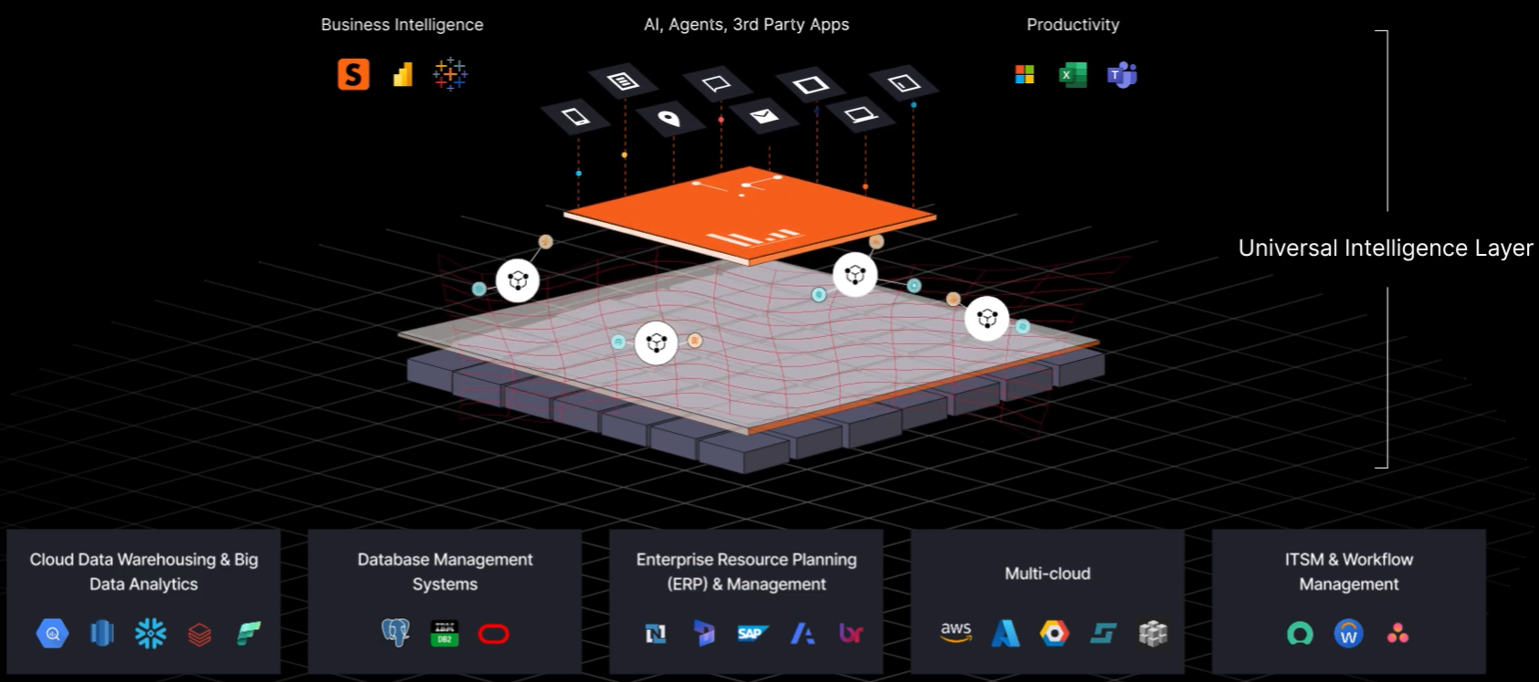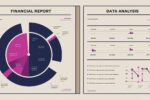In today’s data-driven world, businesses run on information. From Marketing and Sales to Finance and HR, every team relies on data to plan, act, and improve. But when different teams define metrics differently, use separate tools, or interpret data in their own way, confusion sets in. Insights become inconsistent. Decisions slow down. And trust in the data breaks down.
This is where a universal intelligence layer (UIL) comes in.
It gives your organization a single, consistent way to access and understand all your data – no matter where it lives or which tools you use. It acts as a shared foundation for analytics, AI, and reporting, aligning teams around clear, governed definitions and real-time information.
What exactly is the universal intelligence layer?
Think of it as a business-wide “translation layer” that sits between your raw data and the tools or people using it.
Much like a dictionary ensures that everyone speaks the same language, the Universal Intelligence Layer ensures that everyone interprets data the same way. Terms like “customer,” “revenue,” or “active user” are defined once and reused everywhere – in dashboards, spreadsheets, AI assistants, and executive reports.
But it’s more than just a glossary. A UIL also governs who can see what, how metrics are calculated, and how insights are delivered. It makes your data secure, consistent, and usable – at scale.
Why does your organization need it?
Data in a modern business is scattered across platforms: CRMs, ERPs, cloud warehouses, marketing tools, HR systems, and more. Each department works with their own slice of the truth, often interpreting it through separate tools and logic.
Each team depends on data – but without shared logic, they might be working from slightly different versions of the truth.
This misalignment creates conflicting reports, time wasted reconciling numbers, risky or delayed decisions, and a lack of trust in insights.
A universal intelligence layer eliminates these problems by creating a single version of truth that’s shared across the entire organization.
How the universal intelligence layer works?
Strategy Mosaic, our own implementation of a UIL, is powered by an advanced modeling engine called the semantic graph. It functions like a traditional semantic layer but offers greater flexibility, governance, and AI-readiness. Here’s how it works in five key steps:
Define once, use everywhere: You define key business metrics – such as “customer churn,” “pipeline value,” or “retention rate” – in one central, governed place.
📌 These definitions apply everywhere: dashboards, reports, apps, and AI tools.
Connect all your data sources: Over 200+ connectors bring in data from your existing systems – CRM, ERP, HR, marketing, and cloud storage.
📌 No data duplication. No need to migrate. Just live, up-to-date access.
Control access with governance: Role-based permissions ensure everyone sees only what they should – execs, analysts, frontline teams.
📌 No unnecessary data exposure. No duplicated dashboards.
Deliver trusted insights everywhere: No matter where your teams work – in Excel, Chrome, Slack, BI dashboards, or custom tools – they get consistent answers, powered by AI.
📌 Ask a question like “Which accounts are at risk?” and get results based on the same logic as your CFO’s report.
Track and audit every change: Every change to a KPI, metric, or access rule is version-controlled and logged.
📌 This is critical for compliance, transparency, and trust.
What makes it different?
Most semantic layers stop at defining business terms. The universal intelligence layer goes further:
- It connects data across all systems,
- It governs logic and access,
- It delivers insights across all tools,
- And it’s AI-ready from the ground up.
In short, it’s not just a layer of definitions. It’s a live, intelligent framework that brings clarity, speed, and security to your entire data ecosystem.
Real-world benefits across the organization
Consistent metrics across teams: No more “churn” meaning one thing in Sales and another in Finance. Everyone speaks the same data language.
Faster, more confident decisions: Real-time, AI-assisted insights mean less waiting and more action – across departments and platforms.
Role-based access and compliance: Everyone sees only what they’re allowed to. Sensitive data stays protected. Audit trails ensure full accountability.
Scalable, reusable logic: Define metrics once, and reuse them in reports, dashboards, and AI queries – without duplication or rework.
Seamless integration with your Stack: From spreadsheets and Slack to Salesforce and your BI tools, insights flow wherever your teams already work.
Summary
A universal intelligence layer connects your business data, unifies definitions, and delivers consistent insights across your organization.
It reduces friction, eliminates confusion, and boosts trust in your analytics. By powering every decision with governed, AI-ready data, it helps businesses move faster, innovate with confidence, and grow smarter. It’s more than a tool. It’s the foundation for the intelligent enterprise.
(source: https://www.strategysoftware.com/blog/what-is-a-universal-intelligence)


